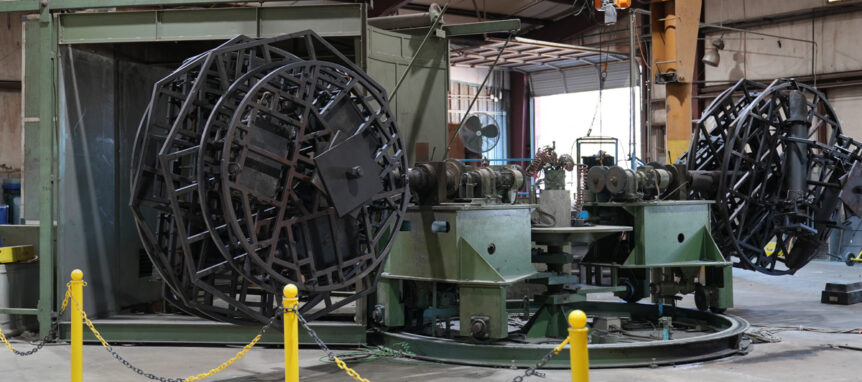Rotational molding, commonly known as rotomolding, is a manufacturing process used to create durable, hollow plastic products with a seamless structure and uniform wall thickness. If you’ve ever handled a large plastic tank, a kayak, or a sturdy storage bin, there’s a good chance it was made using this method. Whether you’re new to product development or simply exploring cost-effective production solutions, this beginner’s guide will walk you through how rotational molding works—and why it might be the ideal solution for your next project.
Understanding the Rotational Molding Process
Rotational molding is a thermoplastic manufacturing technique that uses heat and bi-axial rotation to form hollow parts. The process begins by placing a powdered polymer—most often polyethylene—into a hollow mold made from lightweight, heat-conductive aluminum. Once loaded, the mold is transferred into a large oven and rotated slowly on two perpendicular axes. This motion allows the melting plastic to coat the interior surface of the mold evenly.
As the plastic spreads and bonds with the heated mold walls, the shape of the desired part begins to form. After reaching the correct temperature and coverage, the mold is moved into a cooling chamber where it continues to rotate while the plastic solidifies. Once the part has cooled completely, the mold is opened and the finished, hollow plastic component is removed—ready for finishing, assembly, or shipment.
The Benefits of Rotational Molding
One of the most appealing features of rotational molding is its ability to produce parts with uniform wall thickness and no seams or weld lines. This adds strength and durability, especially for products that will face impact, pressure, or outdoor exposure. Because the process does not rely on pressure like injection molding, it allows for more flexible and intricate designs, including curves, undercuts, and internal supports.
Rotomolding is also highly cost-effective when it comes to tooling. Molds are significantly less expensive than those used in other plastic forming processes, making this an ideal option for lower-volume production runs or startups looking to get a new product off the ground without massive upfront investment. In addition, the process produces very little waste. Only the amount of plastic placed in the mold is used, and any leftover material is often recyclable.
Beyond structural strength and efficiency, rotomolding gives product designers greater creative control. Parts can be made in a wide range of sizes and finishes, and additional features like colors, logos, or inserts can be incorporated during production. With fewer production constraints, rotomolding is well-suited for industries that need functional yet eye-catching designs.
Real-World Applications
Rotational molding is used in countless industries for products that must be hollow, rugged, or weather-resistant. It’s commonly applied in the creation of water tanks, toolboxes, playground equipment, kayaks, large coolers, duct systems, and traffic barriers. Industries like automotive, industrial manufacturing, consumer products, and agriculture all rely on rotomolded components for their strength, affordability, and long-term performance.
Whether a company needs thousands of identical parts or a smaller run of custom components, the process scales well and delivers reliable, repeatable results.
Why Choose Shiloh Custom Molding
At Shiloh Custom Molding, rotational molding is our core focus. With over 15 years of combined experience and two dedicated molding machines, our team delivers consistent, high-quality parts backed by hands-on service and attention to detail. We work with clients across a variety of industries, helping them turn ideas into durable, functional products through efficient, cost-conscious manufacturing.
What sets us apart is our ability to offer more than just molding. We provide in-house surface finishing to meet your texture and appearance goals, and our drop ship fulfillment program allows us to store your products on-site and ship them directly to your customers as orders come in. This end-to-end solution saves time, reduces overhead, and keeps your supply chain moving.
Is Rotational Molding Right for You?
If you’re developing a product that requires strength, design flexibility, and a seamless structure, rotational molding may be the perfect fit. It’s especially valuable for businesses that want to reduce tooling costs, streamline production, or explore new product lines without the burden of high-volume requirements.
Whether you’re just starting out or looking to refine your current production process, our team at Shiloh is here to help guide you every step of the way.

